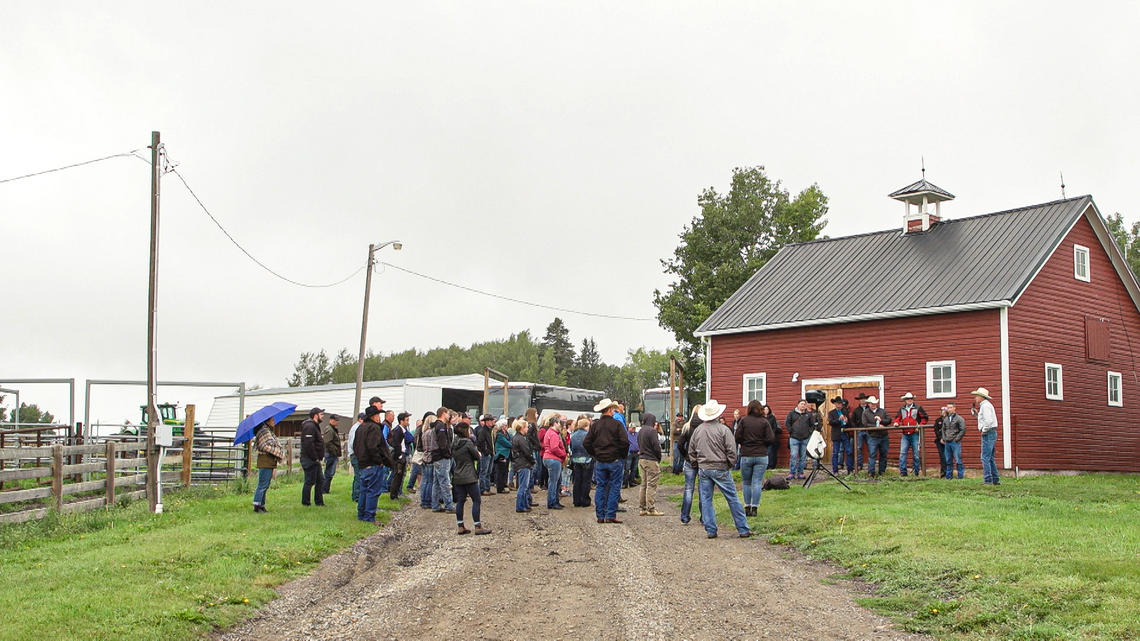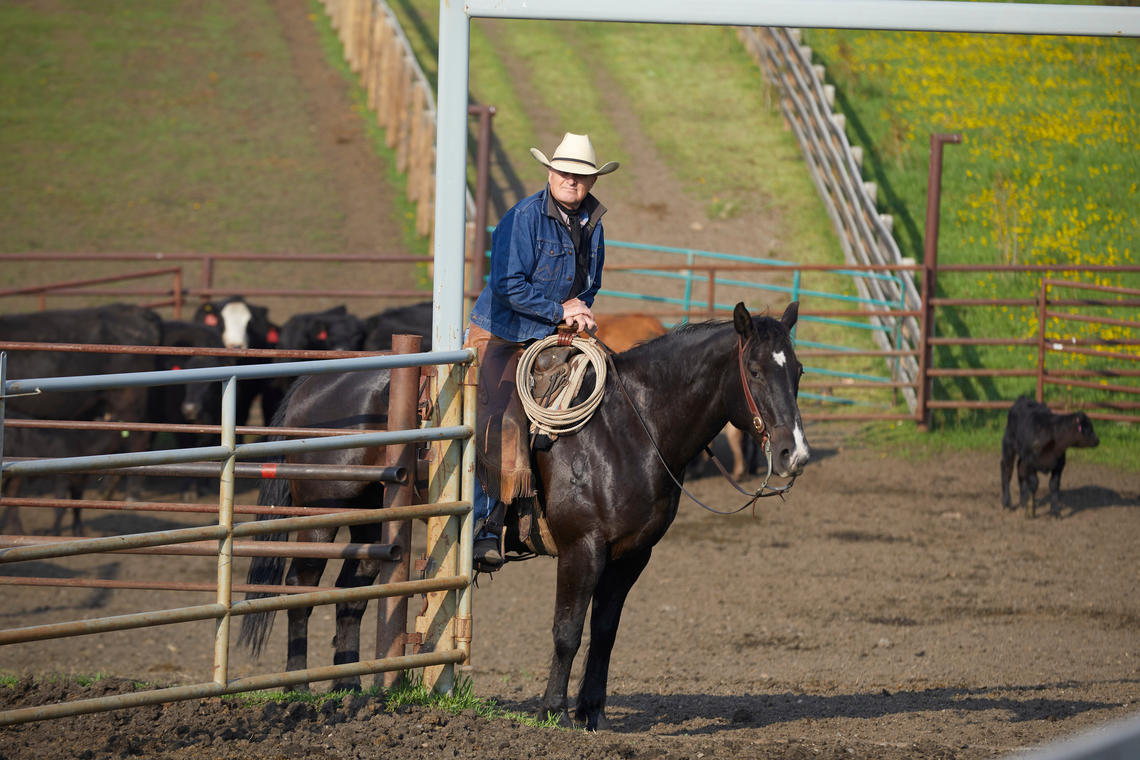Aug. 15, 2019
Beef industry tour group eager to learn about W.A. Ranches at the University of Calgary

It was a chilly, grey morning with drizzling rain at W.A. Ranches, but that didn’t deter two busloads of people in the beef industry from enjoying a look around the remarkable property.
As part of a pre-conference tour for the Canadian Beef Industry Conference, 100 delegates from across North America — a cross-section of the beef industry — spent some time learning about what goes on at this 19,000-acre living laboratory near Cochrane. The $44-million ranch was donated to the university last fall by J.C. (Jack) Anderson and his daughter Wynne Chisholm.

Tour participants get an overview of operations from Ed Pajor and Matt Williams.
Nathan Luit
“This has been my most exciting stop,” says Kelly Smith-Fraser, owner of NuHaven Cattle Company, a beef cattle ranch near Pine Lake, Alta., and the vice-chair of Alberta Beef Producers. “This was where I wanted to go. I think it's phenomenal for me as a producer to get to see what the university and what the veterinary school is doing.
"Hearing the students present on their different projects, I just can't tell you how excited I was. I think this is going to be a huge thing for our industry as a whole to be able to get this information and to work with the students.”
Impressive property, impressive students
Dr. Ed Pajor, the director of W.A. Ranches, was glad for the chance to showcase both the impressive ranch facilities and the equally impressive work of graduate students.
“We took them out and we showed them our facilities here at Cochrane North, where we have our processing barn, which was designed by Temple Grandin. It's just a fantastic opportunity for us at the University of Calgary and the Faculty of Veterinary Medicine to demonstrate the type of work that we will be doing, to demonstrate our commitment to agriculture, and to let our students shine to visitors from all around North America.”

Matt Williams oversees the day-to-day operation of the working cow-calf ranch.
Todd Korol
Ranch-related research to help beef producers
Dr. Roy Lewis had seen presentations on the ranch and heard "the buzz about the substantial donation," but this was his first chance to see the operation first-hand.
“That’s a vast amount of land that they have here, all basically together in one block, and together with a big amount of leased land, so they'll be able to do things that aren't being done at any other research facility,” says Lewis, a technical services veterinarian with Merck Animal Health, who also does clinical work with beef producers.
“I realize they're going to continue running this as an operating ranch as well, but there will be ranch-related research that will help producers down the line.”
Pajor wasn’t surprised at the level of interest in research being done at the ranch, which includes projects on calf processing and vaccine efficacy, pain mitigation and the effects of colostrum on newborn calves.
“The producers, many of them, on this tour are interested in knowing what kind of work is being done that might help them down the road. At W.A. Ranches we are doing a lot of applied research that'll be directly relevant to the industry itself. We will also be doing research which involves multi-faculty collaborations, using a One Health approach to address complicated problems, with the result being a sustainable beef industry.”




